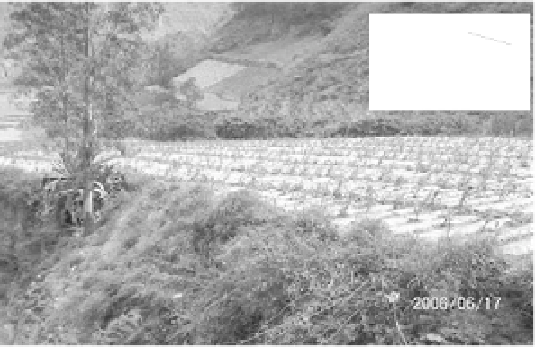Environmental Engineering Reference
In-Depth Information
Compared with storm-triggered landslides, the earthquake-triggered avalanches and landslides mobilize
much coarser sediment. The storm-triggered landslides primarily result from local pore water pressure
gradients and are likely to be most pronounced in the shallow subsurface. Seismic ground motion affects
local stress fields well below the topographic surface and may trigger a relatively large number of
deep-seated, bedrock-involved avalanches and landslides. Such mass movements are likely to produce
coarse debris with diameters of up to several meters. The mobilized sediment is, therefore, difficult to
transport by river flow. A large volume of mobilized debris deposits at places where the potential for
onward transport is low. Because seismic ground motion is strongest at ridge crests (Geli et al., 1988),
earthquake-induced avalanches and landslides often cluster around high points and deposit debris on
hillslopes rather than on channel floors (Hovius and Stark, 2006).
The landslides may also be classified according to the type of motion into rotational landslides and
translational landslides. Figure 4.2 shows a rotational landslide occurring on the Liujia Gully in the
Xihanshui Basin in Gansu, China. The sliding body moved along a curved bed. The upper part moved almost
vertically downward, left a chair-back shapped concavity. The lower part moved toward the river channel
and formed a convex slope. The chair-form is a diagnostic feature of rotational landslides. Figure 4.2(b)
shows a translational landslide occurring in the Xiaojiang watershed in Yunnan, China. The sliding body
moved along a planar slip surface for several hundred meters.
(a)
(b)
Fig. 4.2
(a) A chair-form rotational landslide on the Liujia Gully in the Xihanshui River basin in Gansu Province in
western China; (b) A translational landslide in the Xiaojiang watershed



































Search WWH ::

Custom Search